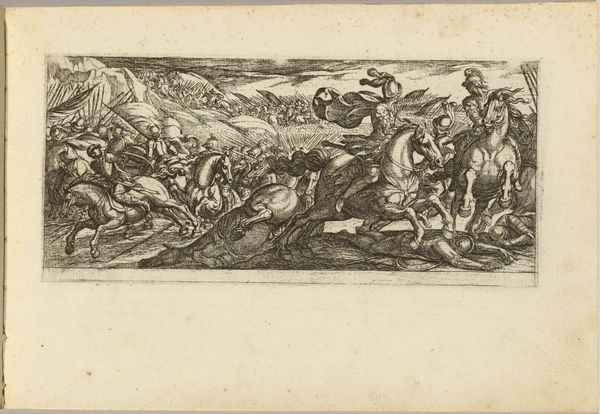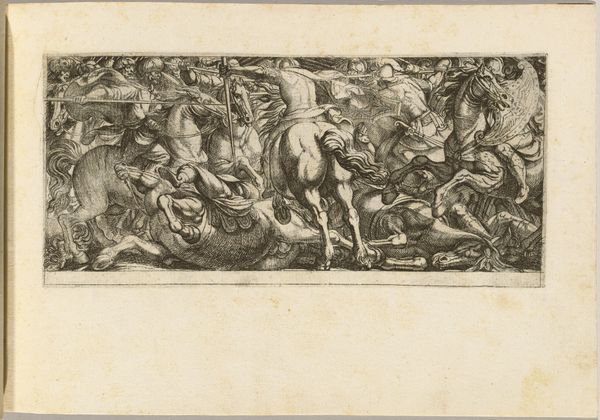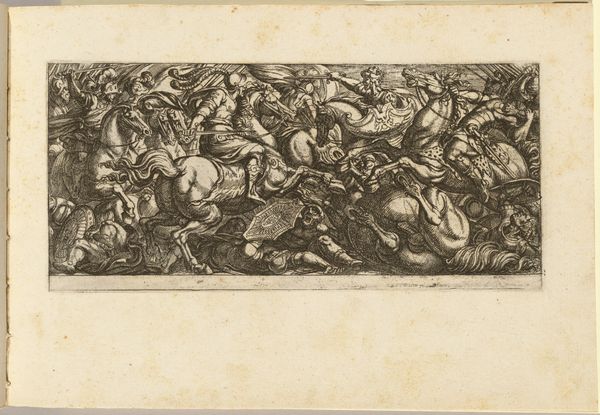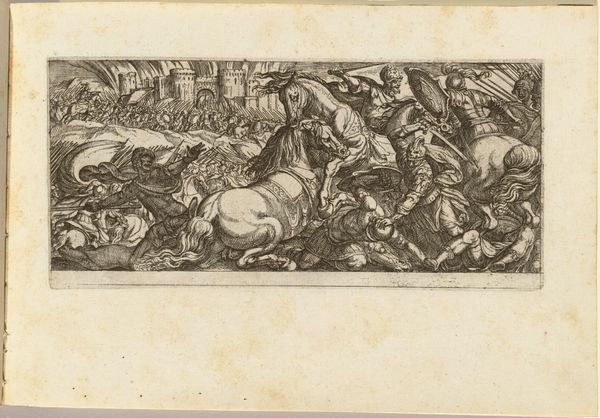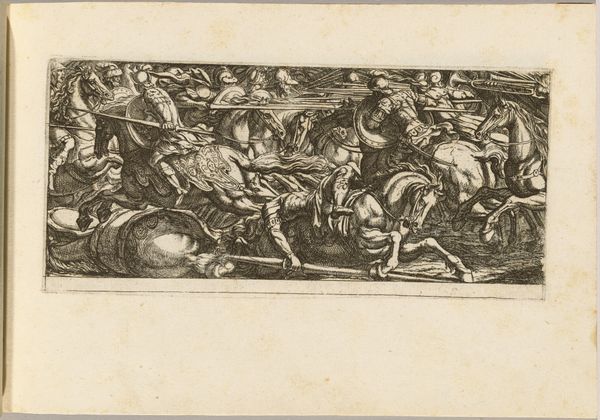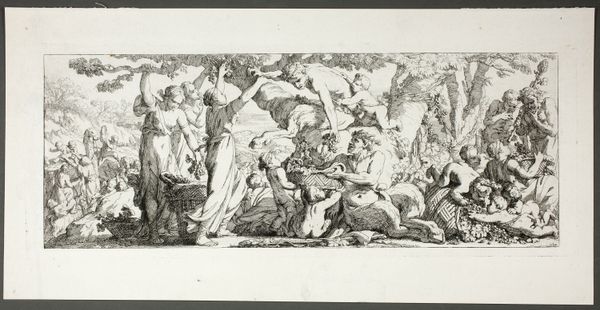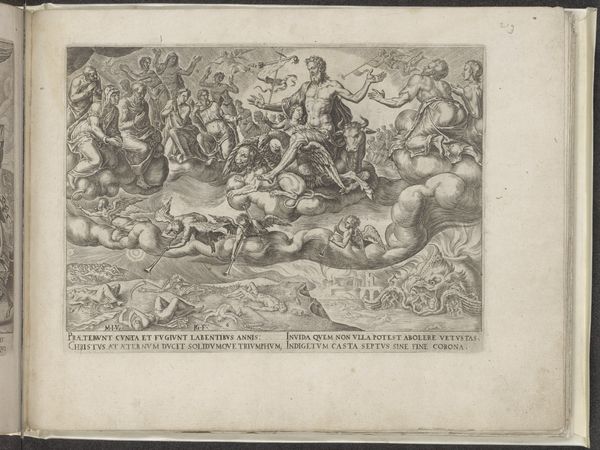
print, engraving
#
baroque
# print
#
landscape
#
figuration
#
history-painting
#
engraving
Copyright: National Gallery of Art: CC0 1.0
Editor: Here we have "Cavalry Attack with Soldiers Fleeing", an engraving by Antonio Tempesta. It depicts a chaotic battle scene, full of swirling movement. It feels incredibly violent and, frankly, a bit overwhelming. How do you interpret this work? Curator: That feeling of being overwhelmed is key, I think. Consider the historical context. Tempesta was working in a period of constant upheaval, religious wars, and power struggles were the norm. This print isn't just a generic battle scene; it's a reflection of that era's anxieties and the very real experience of conflict. Editor: So, the chaos reflects the social climate? Curator: Exactly. And the fact that it’s a print matters too. Prints made art accessible to a wider audience. By depicting the brutality of war, Tempesta forces viewers to confront its reality. This isn't some glorified heroic narrative; it's a messy, brutal, and human event. Who benefits from the conflict depicted here? What narratives are amplified and which are silenced? Editor: I see your point. It's easy to get caught up in the artistic skill, but you're reminding me to consider the 'why' behind the image. It does seem critical of the power structures in play, rather than celebratory. Curator: Precisely! The swirling composition can also be viewed through a critical lens, maybe pointing to the dizzying effects of power struggles on the masses, particularly in a landscape of constant change and re-negotiated social contracts. Does this perspective resonate with your own experience of our contemporary moment? Editor: Absolutely. Looking at it now, I'm not just seeing a battle; I'm seeing a commentary on the human cost of conflict. I’m glad I have been pushed to see art this way! Curator: And that’s the point – to engage, to question, and to situate the artwork within a larger conversation about power, identity, and social justice.
Comments
No comments
Be the first to comment and join the conversation on the ultimate creative platform.

